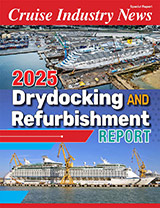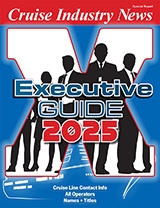Having announced itineraries through May 2020, Carnival Cruise Line does its deployment basically on an annual cycle, opening up a year’s worth of inventory at a time, according to Fred Stein, vice president of itinerary planning.
“Meanwhile, every day, every week, we are constantly monitoring the performance of all our products, and it becomes an exercise in optimization essentially,” he explained.
As for homeport and itinerary criteria, Stein said: “First of all, it must fit with our core strategy. As we are primarily serving the North American market, we have many local homeports. Two-thirds of our guests drive to the port, and half the population of North America lives within a five-hour drive of one of our ports.
“We also focus a lot on the family market and not having to buy air tickets. If you are a family of four, for example, it really helps reduce the cost of the vacation.
“With our deployment all around North America, we are also committed to offering interesting itineraries in a shorter time frame that do not require a flight. So we have an eight-day itinerary from Southern Florida all the way to Aruba, Bonaire and Curacao. That is something people typically have to fly to San Juan to experience. We offer it from a Saturday to a Sunday.”
Stein continued: “We look at the entire market and try to plan as far out as we can based on what we think will be happening. Another factor we monitor is, of course, guest satisfaction and also marquee value. We poll all our guests on how they enjoyed their stays in the ports they visited. We also reach out to past guests, people who have not sailed with us and travel agents, about where they want to go the most, to find new destinations or how to better mix destinations together for an itinerary.”
Another key factor is the technical characteristics of a port, whether they can accommodate Carnival’s ships. Some homeports, for example, have height restrictions because of bridges, Stein noted, limiting the size of vessels that can get into these ports. Fuel costs and shore excursion revenue also play important roles.
Stein said that Carnival already has two or three scenarios for what things will look like in 2022 and 2023 and is constantly evolving those scenarios based on the performance of the existing fleet and being mindful of industry trends.
Going into 2019, among some of the changes for Carnival is more capacity in the short cruise market.
On the West Coast, big things are happening too, with Carnival deploying the new Panorama on seven-day Mexican Riviera cruises in fall 2019. The Splendor moved to Long Beach this winter, but moves on to Australia when the Panorama arrives. Also underway is a new port development in Ensenada.
Looking ahead, Stein said: “From the homeport perspective we are in good shape. We know what our needs are and we have negotiated long-term agreements with our key homeports to make sure the berth space is there for us. Over the long term one of the biggest challenges in the Caribbean will be the destinations and that is part of the reasoning behind our new Grand Bahama project. There are thoughts around other places that may be developed as destinations as well, making sure we will continue to provide the quantity of places we need, but also develop places that are new and different to drive demand.”
Excerpt from Cruise Industry News Quarterly Magazine: Spring 2018



